Explore the retirement home for sailors operating from the 1830s to the 1970s
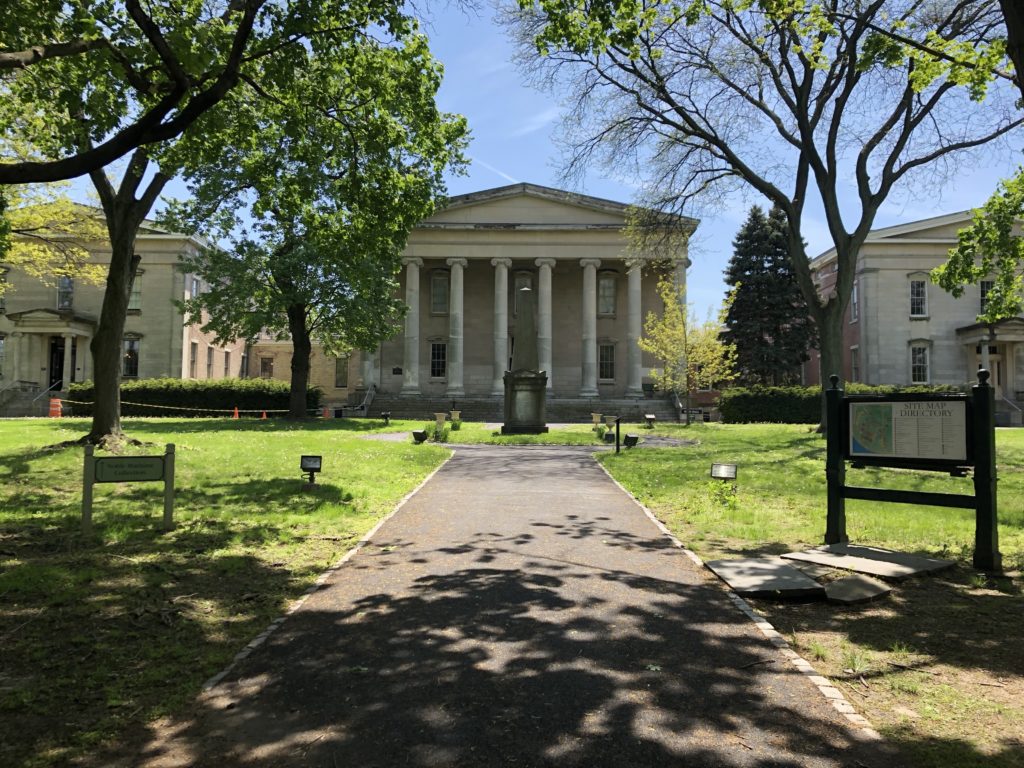
Apple | Spotify | Stitcher | Transcript | Email | Bonus Episode
Listen to the 15-minute bonus episode for Sailors’ Snug Harbor which takes recordings I couldn’t fit in the original episode like how religion intertwined with this retirement home and an archaeological dig that investigated how the women employed at Sailor’s Snug Harbor lived. You can listen by joining Someone Lived Here’s Patreon at any level.
In this episode of the podcast Someone Lived Here, Kendra brings you to Sailors’ Snug Harbor on Staten Island. This was a retirement home for sailor’s that was free of charge for all its residents. The home was created by Robert Richard Randall’s will and was run by a Board of Trustees that purchased the 160 acres on Staten Island.
While you walk through the Noble Maritime Collection and the larger Snug Harbor Cultural Center and Botanical Garden you’ll learn about how a place like this came to exist and more about the men who lived there. Through essays and historical documentation, we learn more about this special space whose buildings are still standing after centuries.
Thank you to Megan Beck for guiding us through the home and teaching us more about Sailors’ Snug Harbor and the Noble Maritime Collection.
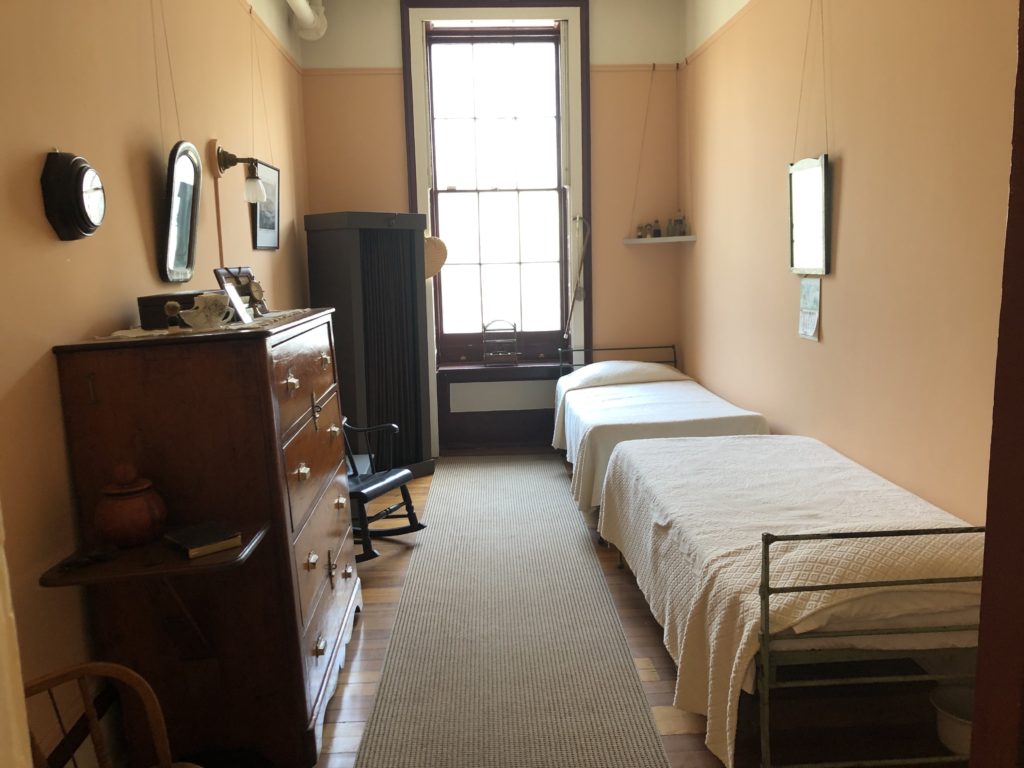
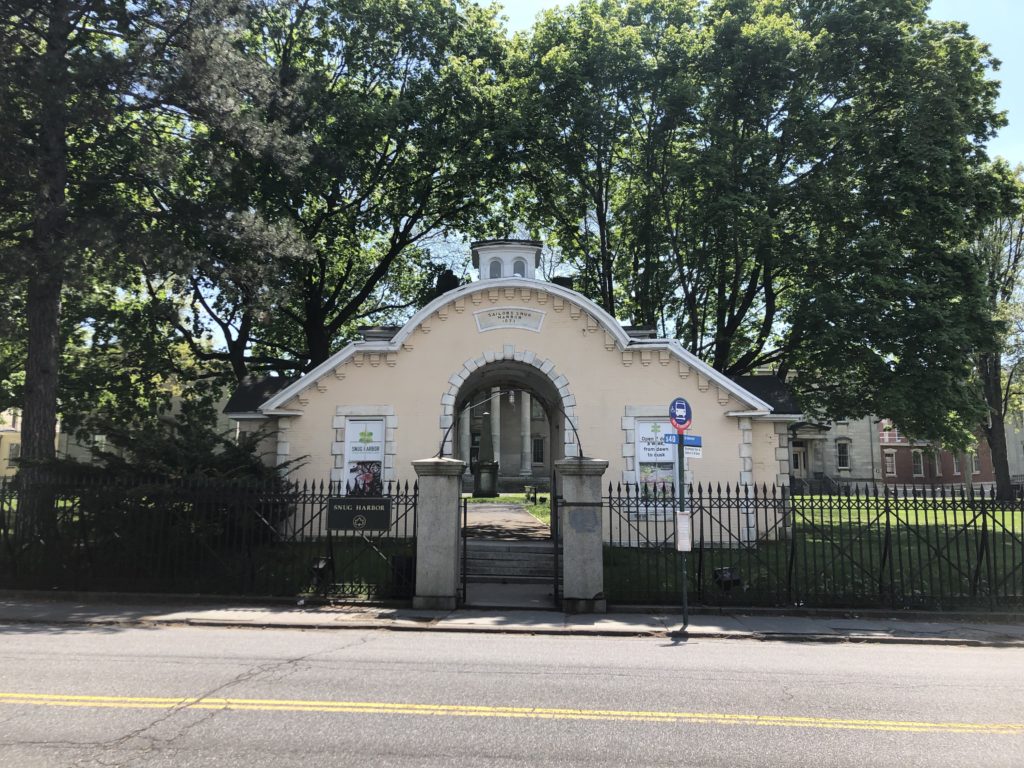
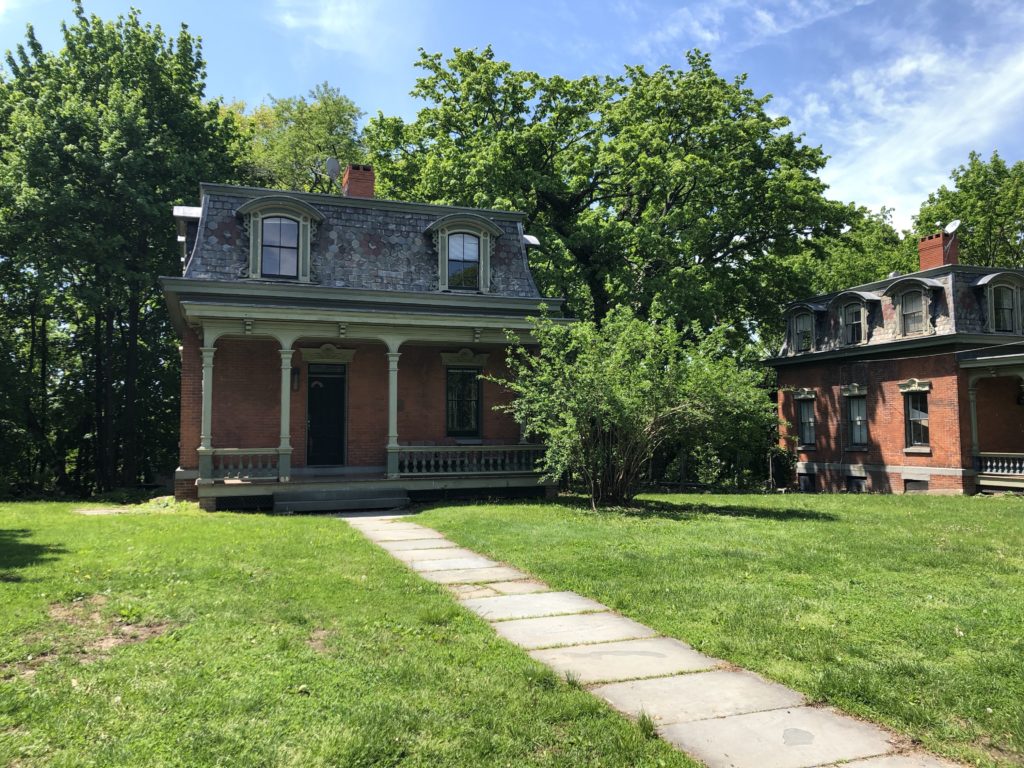
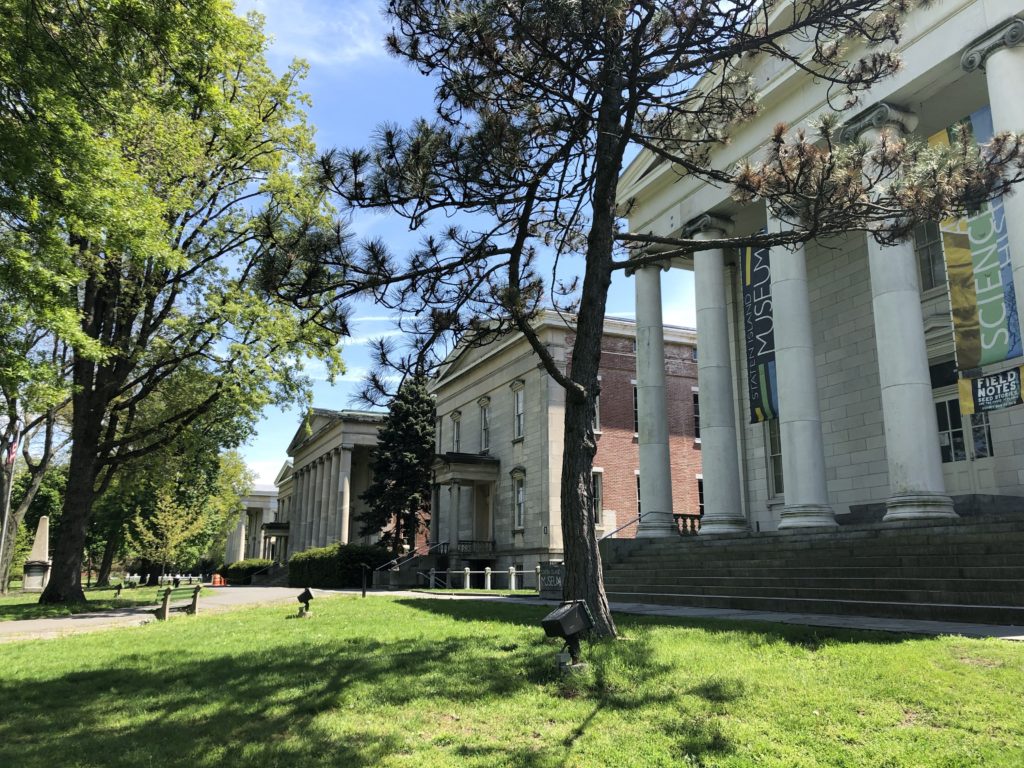
Music by Tim Cahill. Icon artwork by Ben Kirk. Transcription by Sam Fishkind.
Below is a transcript for season 1, episode 3 of Someone Lived Here at Sailors’ Snug Harbor on Staten Island. If you have any questions about the show or suggestions on how to make it more accessible please reach out at someonelivedhere@gmail.com.
Transcript by Sam Fishkind
Kendra Gaylord: 00:00 This week, we’re at Snug Harbor Cultural Center and Botanical Garden, but for nearly 150 years it was known as “Sailors’ Snug Harbor”. It was a retirement home for aged sailors that housed 10,000 men over the century it existed. The facility was functioning from 1833 to the 1970s. The 83 acres of land tell a story that I never would have guessed existed, let alone in a borough of New York City. Welcome to “Someone Lived Here”, a podcast about the places cool people called home. I’m your host, Kendra Gaylord. Every week this season we will be bringing you to a cool place in New York and tell you the complicated stories of the people who once lived there. Today we’re on the north shore of Staten Island. On one side of the road, Richmond Terrace, is New York Harbor. On the other side is Snug Harbor. When I first walked through the stone gatehouse, what I saw kind of confused me. Five gigantic Greek revival buildings that look like they could have been plucked from ancient Greece. They’re beautiful and imposing and had been referred to as the most ambitious moment of the Classical Revival movement in the U.S. But how did a retirement home that was free of charge to all residents come to exist in 1833, before baseball even existed? To find out more about how this place came to be; and how most of the buildings are still standing, nearly 200 years later, I spoke with Megan Beck. She’s a curator at the Noble Maritime Collection, which resides in one of those five big buildings.
Megan Beck: 01:32 So just to kind of start at the beginning, Sailors’ Snug Harbor was founded by Robert Richard Randall, who was a wealthy person here in New York City in the late 18th century, very early 19th century. And he was from a family that made their wealth through legal privateering; so they made it through working on the sea. The story goes that Alexander Hamilton and his assistant, Daniel Tompkins (who ended up becoming Governor of New York and the sixth Vice President of the United States) helped draft the will, and he didn’t have any descendants. So he left his money and his land to the establishment of retirement home for age, decrepit and worn-out sailors because of the belief that what came from the sea, meaning the money and all the wealth that the Randall family had should be returned to the sea: the men who worked there.
Kendra Gaylord: 02:25 Robert Richard Randall died in 1801, and Sailors’ Snug Harbor was established the same year. It didn’t open for 30 more years because relatives contested the will. But the trustees also took that time to change some of the original plans.
Megan Beck: 02:38 So the original plan was to establish it at the rental property in lower Manhattan, which is now Greenwich Village. And it was, he [Robert Richard Randall] had a huge farm there; it was called Minto Farm, but the trustees of Sailors’ Snug Harbor, which were established by the will, decided to come to Staten Island. So the board of trustees was formed by the will. And he [Robert Richard Randall] did something unique where he didn’t name specific people, he named positions. So including the recorder of the city of New York, the comptroller of the state, the Head of the Commerce Department, ministers from the Presbyterian and Episcopalian churches and the President and Vice President of the Marine Society as well as the Mayor of the City of New York. So this way those positions formed the board in perpetuity. And then whoever filled those positions had a place on the board. They decided to come out here to Staten Island, which was all farmland and they were able to purchase a 130-acre farm right here and build the site here. And what they did with Minto Farm is they broke it up into a bunch of different lots to have that be a source of revenue. So they rented out and, the, it was about like 200 or so lots that they were able to receive rent from.
Kendra Gaylord: 03:54 These lots were just north of Washington Square Park between 5th Ave and University Place. The trustees purchased the land in 1827 and broke ground in 1831 with the architectural plans of Minard Lafever. He was later known for his pattern books, like “The Modern Builder’s Guide”, that helped popularize the Greek Revival style. The first building is known as Building C, and looks like if the Grand Hall in Harry Potter was set in Atlantis. The ceiling is painted in a light blue, and has tridents and sails and other nautical elements as a mural. Words are painted over the doors reading, “port after stormy seas and rest after dangerous toil”. When this was the only building, it acted as the administrative building, an infirmary, a dining hall, and dorms.
Megan Beck: 04:41 But as more and more people were applying, they had to expand. So the building we’re in right now opened in 1844 as a dormitory, and eventually five more buildings were built as dorm-dormitories. At its height, there were seven buildings used for dorms.
Kendra Gaylord: 04:58 Megan is going to give us a tour of one of those dorm rooms. This dorm room has been made to recreate what one of the rooms looked like in 1900 when the site was most-populated.
Megan Beck: 05:08 There’s two beds. There have been two men in this room and you can see that the dresser has four drawers, two for each mariner, and there is a lock to protect your possessions. That was probably a very common that the men would want to protect their belongings. They didn’t have much, and they wanted to protect what was theirs.
Kendra Gaylord: 05:32 I wanna emphasize that these dressers are extremely cool. Not only are they dressers, they also have little side tables on each end that can be lifted up and secured so that the men would have a place to write.
Megan Beck: 05:44 The dresser was actually one of the first pieces donated to the founding director when she moved to this building. So this is a real Sailors’ Snug Harbor dresser. One of the beds is historic from the time. We do get things that are donated. You know, so when the site was moving, they took a lot of stuff with them. But some of it was just left here and people just came in, collected it, and some of it has found its way back to us. So we have several pieces from both the dormitories and the hospitals in our collection that are from the actual Sailors’ Snug Harbor Hospital and from the dormitories.
Kendra Gaylord: 06:20 There’s also art hung on the walls and a lot of this would have been supplied by Snug Harbor. And that meant a lot of paintings of the ocean. All of these paintings are hung up in a way that means a lot to me personally. All of the art and mirrors are hung on wires from picture molding, also known as a picture rail. It was very popular from the 1840’s to the 1940’s and made it so you could avoid putting holes in the wall entirely. It was also very popular in my household growing up, and there are a lot of hole-less walls to prove it, but beyond picture molding, Snug Harbor was up on the latest tech, but it was the 1800’s, so that meant running water and lights.
Megan Beck: 06:58 I mean the site was premiere in a lot of ways. It was early to get running water. It was like decades ahead of the rest of the surrounding area. They also…I believe they put in electricity a bit earlier than the rest of the area as well. That’s kind of Thomas Melville’s contribution to the, to the harbor. He was kind of forward-thinking. So they had, they had those kinds of amenities.
Kendra Gaylord: 07:23 And yes, Thomas Melville was the younger brother of “Moby Dick” writer, Herman Melville. One of the amazing things about this place is how intentional every choice feels. Even the layout of the eight buildings.
Megan Beck: 07:35 So, all of the buildings are connected by these interior hallways called “hyphens”. So that was part of the original design to have a way to connect/interconnect all the buildings, so that if you were in a wheelchair, you didn’t have to go outside…or just anything. If the weather was bad and you wanted to go to the dining hall and you didn’t feel like walking downstairs and walking outside and walking around all of these buildings, you could just walk through them. So that was an intentional design. So all of the buildings that are still here, at least in the front half of the site ,are connected in some way, either be it by an above-ground visible hallway that’s, you know, an enclosed hallway or underground. They’re all connected.
Kendra Gaylord: 08:17 And a lot of these intentional decisions helped the sailors maintain their autonomy.
Megan Beck: 08:22 There’s this story of how they rigged a rope system on the inside of the building so that if you were blind, you could hook your cane onto one of those and it would lead you to a certain place. So like one of them led you to the dining hall, one of them led you to the Governor’s office (if you had something you wanted to talk about) and they would lead you to different places. So they thought of those things like “how do we help this person independently move from place to place in a way that makes sense and is safe?”
Kendra Gaylord: 08:52 There was also a lot of creating happening in of these buildings:
Megan Beck: 08:55 But they encouraged the men to keep busy. So a lot of them were very artistic or crafty, and they were allowed to do any of that kind of stuff that they wanted. They could sell it. They would have, you know, kind of craft fairs here later where they could sell their wares.
Kendra Gaylord: 09:11 One of the hyphens in the basement of Building C was devoted to net-making and basket-weaving. There are actually some very terming photos and paintings of this that we’ll share on our Instagram. But despite a lot of positives, many of the men weren’t particularly satisfied with their new life. In an essay titled “When the Sails Are Furled”, published in 1898 by a young Theodore Dreiser, he writes about the sailors’ unease about their situation. Quote: “to many of them, this institution appears to be even a wasteful affair, intended more to irritate than to aid them. Not a few of them, as you may guess, resent routine duty and the very necessary officials and each other. Although they possess comfortable and even superior living, apartments, wholesome and abundant food, good clothing, abundant clean linen, a library of 8,000 volumes, newspapers, periodicals, time and opportunity for the pursuit of any fad or fancy and no restrictions, which any reasonable man could demur – still, they are not entirely happy. Life itself is passing and that is the great sorrow.” Unquote.
Megan Beck: 10:21 So it’s one of those things where the administration and the men were two very different groups of people. The people who were in charge had a certain set of beliefs of how these men should spend their retirement. And the men had a different view.
Kendra Gaylord: 10:40 The site was a dry site, and, for many of these men, that was really not what they wanted. One of the reasons for selling crafts was to make money. Tobacco and clothing was all provided at Snug Harbor, but alcohol had to be self-financed. The sailors would often sneak to Leedy’s Bar, which is still there today. When the Noble Maritime Museum restored the building and the roof, they found bottles surrounding the skylights…so the site wasn’t as dry as the administration may have wanted. But a few things happened on this site that were much worse than undercover drinking, one of which was written about in Patricia Salmon’s, “Staten Island Slangs”… The minister at Sailor Snug Harbor in the mid 1800’s was Robert Quinn. He started his career as a sailor, but he became a preacher in 1833. On a Saturday in January, 1863 after leading a prayer, he came upon Herrmann Engle who had previously been deemed “harmlessly insane.” Engle said to him, “you’ll expose me, I know you will if you live,” and then pulled the double-barrel gun from his breast pocket and shot the minister right near the heart. Engle then shot himself in the head. And there is a gory descriptor involving a jaw in the lawn…That I’ve already gone too into depth on. Engle was 77 at the time and the minister was 65. Most sailors from Snug Harbor were given a plot in the eight-acre cemetery with over 7,000 people buried there. Herrmann Engle’s body was not allowed in the cemetery and was buried right beyond the graveyard’s fence.
Music: 12:21 [Music Interlude]
Kendra Gaylord: 12:21 In Dreiser’s essay, he often asked sailors if they were young again, if they would choose a life at sea. They mostly said yes, they would be sailors again, but my favorite answer is this one: “Not I. If I were to sail 4,000 times, I’d be as seasick the last trip as on the first day out. Every blessed trip I made for the first five years I nearly died of seasickness.” Dreiser asked the sailor why he kept going. “Well, when I get into port, everybody would ask, ‘well, how did you like it? Are you going again?’ ‘Of course I am,’ I would answer and went from pure shamefacedness and not to be outdone. After a while, I didn’t mind it so much, and finally kept to it because I couldn’t do anything else.” Dreiser asked another sailor if he could tell him an adventure at sea, and the sailor said, “I could. But I would rather tell you of 13 peaceful years here. I came here when I was 70, though at 60, when I was weathering a terrible storm around the Cape, I promised myself that if ever I reached home again, I would stay there. But I didn’t know myself, even then. My destiny was to remain on the sea for 10 years more, with this harbor, for my few remaining.”
Music: 13:34 [Music Trails Off]
Kendra Gaylord: 13:38 50 years after that sailor spoke of his peaceful years, the population at Sailors’ Snug Harbor was dwindling.
Megan Beck: 13:45 With the advent of social security and other types of government pension programs, a site like this wasn’t as necessary as it once was; because originally these men didn’t get pensions. You know, if they were in the Navy, they did, or other branches of the military…they had some sort of a pension. But in the Merchant Marines, they just, they didn’t, so they came here and they didn’t necessarily have any source of income, but with social security and those other types of government programs, they had other ways to subsidize living that less people started to come here. So it’s around the 1950’s where you start to see some of the buildings coming down. The one that always breaks my heart when I think about it is the church – the Randall Memorial Church that was a scaled-down version of St. Paul’s in London. They offered it up to the community hoping someone would want to take it, but it was a massive building and no – no one wanted to undertake kind of what it would require to save it.
Kendra Gaylord: 14:42 Over time more and more of the buildings were demolished. And in 1972, Sailors’ Snug Harbor moved to a facility in North Carolina. At first the buildings’ future were in question.
Megan Beck: 14:54 There’s actually a story where Jackie O was invited here. She was very into historic preservation, and she came here and that helped kind of shine a national spotlight on what this place was, and what was at risk by tearing it down. And the city did ultimately step in to save it and it was established as a cultural center. Why our museum; why the Noble Maritime Collection is located here is because our namesake, John A. Noble, was a local maritime artist here on Staten Island and he lived in the neighborhood. And when Sailors’ Snug Harbor was gonna close and they were going to move to North Carolina, he was very instrumental in the fight to save it. He was an artist, but he was also a sailor. So when he was younger he went to sea and he talked to men who, when they would pass by Snug Harbor on the boats said, “I’m going to live there one day.” And he wanted to preserve their memories and their stories and just felt that the buildings that they lived in should be preserved as well.
Kendra Gaylord: 15:54 There’s one last room that I want to show you. It’s on the very top floor of this building.
Megan Beck: 15:59 Yes. So this room kind of gives an idea of what the whole building looked like when we moved here to take over the building. So, you know, I mean the ceiling was falling down. The skylight didn’t even have glass in it. It was just a hole, the paint was chipping off the walls and at one point, I want to say it was the 1950’s, they painted all the rooms this kind of like…institutional-like mint green in color. They painted over the floors; beautiful floors. So, this was what we had to tackle in order to restore this building, and it was a largely volunteer effort. We had a crew of volunteers that we called “the Noble Crew”, and they came here and they pitched in whenever they had some time, and it took about eight years total to restore this building.
Kendra Gaylord: 16:52 This room is dedicated to John Santore, a leader of the Noble Crew, who had the idea to leave one room as it was to show people all the work that had transformed the museum. John Santore was a firefighter in the New York City Fire Department, and died on September 11th.
Megan Beck: 17:18 The Noble Maritime Collection is open Thursday through Sunday and you can walk the grounds of Snug Harbor any day of the week. Thank you for listening to “Someone Lived Here”. I’m your host Kendra Gaylord. Be sure to subscribe so you can be the first to hear the next episode about Lee Krasner and Jackson Pollock’s home in East Hampton, New York. Thank you to Megan Beck from the Noble Maritime Collection, the book “Staten Island Slangs” by Patricia Salmon and the essay “When the Sails are Furled” by Theodore Dreiser. Music is by Tim Cahill and podcast artwork is from Ben Kirk. If you have any notes or recommendations for the show, send us an email at someonelivedhere@gmail.com. To learn more about the show, go to someonelivedhere.com and follow us on Instagram.